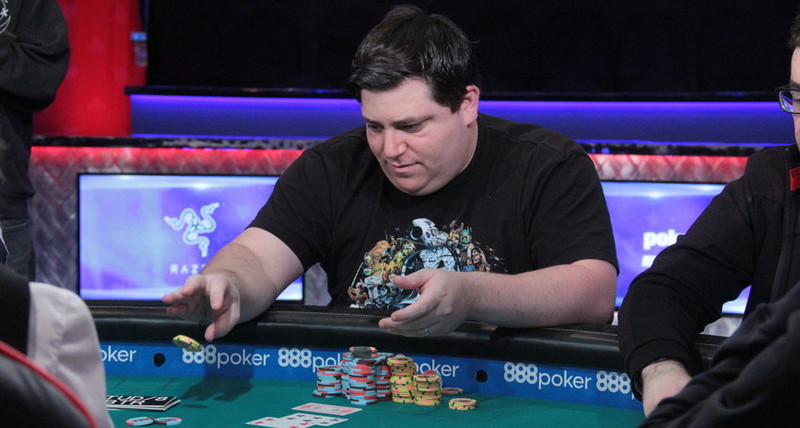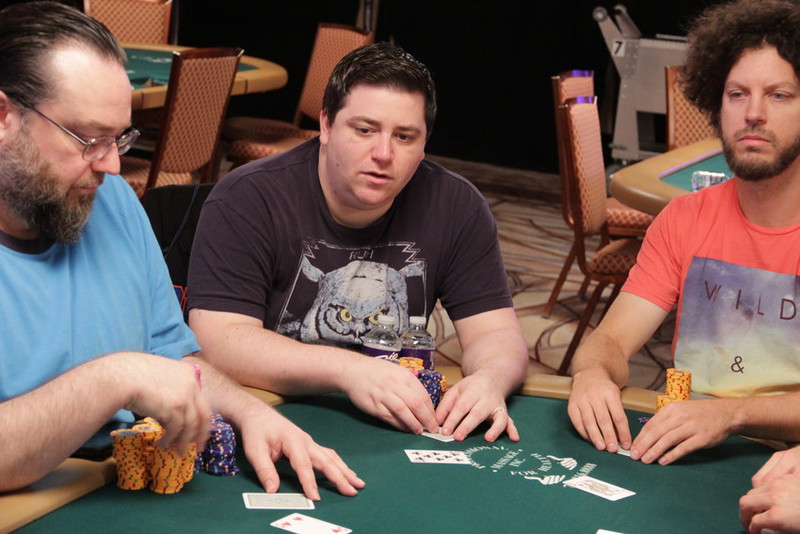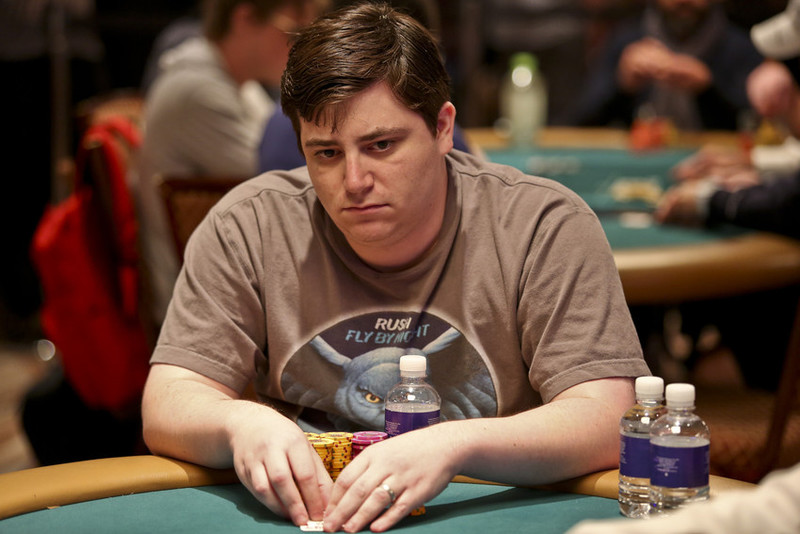






Poker Strategy: Triple Draw Fundamentals With Randy OhelMixed Games Specialist Breaks Down A Hand From The Final Table Of Last Year's $1,500 2-7 Triple Draw At The WSOP |
|
|

To put it simply, Randy Ohel is a mixed-games beast. The Vegas resident and Florida native has more than $2 million in career earnings, most of them coming in mixed-games tournaments at the World Series of Poker.
Ohel won a bracelet in the $2,500 2-7 triple draw event at the 2012 WSOP for $145,247 and finished second in the $10,000 championship event in that same game last summer for $177,992. He also finished runner-up in the $10,000 stud eight-or-better championship in 2016 and in the $10,000 H.O.R.S.E. championship in 2014.
Away from tournaments, Ohel plays some of the biggest cash games in Las Vegas and is a regular at the Bellagio high-stakes mixed games. He also occasionally does commentary work for PokerGO during mixed-games broadcasts.
In an effort to provide readers with solid fundamental strategy of some mixed games, Ohel sat down with Card Player to break down a hand from the final table of the $1,500 2-7 triple draw event from the 2018 WSOP.
The Hand
| Event — Blinds | WSOP Event No. 29 | 25,000-50,000 |
| Players | David Prociak | Oscar Johansson |
| Chip Count | 1,000,000 | 1,050,000 |
| Hand | 9-7-6-5-4 | ? |
Three-handed at the final table, Oscar Johansson raised from the small blind and David Prociak made it three bets from the big blind. Johansson calls. Johansson drew two and Prociak took one.
Johansson checked, Prociak bet, and Johansson called. They both drew one card and after the second draw, Johansson led out and Prociak called. They both stood pat and they both checked after the third draw.
Prociak tabled 9-7-6-5-4 and Johansson mucked his hand.
Steve Schult: Prociak three-bets a one-card draw before the first draw. Are all one-card draws played as three-bets in this game?
Randy Ohel: Absolutely. It’s a combination of raw equity with a desire to not split your range, so by three-betting your entire one-card draws, you’re not letting your opponent know that you have a wheel draw or an 8-7 draw or a nine draw or whatever. You force them to play more honestly against you and you don’t give them any extra information.
SS: How good is a two-card draw in this game? And how much better is a hand like 7-4-2 versus a 9-8-2 or something rougher like that?
RO: 9-8-2 is not a hand. It doesn’t exist. You would play that as an 8-2 and draw three, but drawing two is standard in triple draw with a whole variety of hands. Anywhere from full-ring to in this case three-handed. All reasonable hands are going to be stronger with fewer players dealt in.
There’s a funny effect in triple draw where everyone is going for generally the same cards. The more people fold, the stronger everyone else’s hands get on average. A button’s hand after three folds in a six-handed game is going to be a lot stronger on average than a button hand in a three-handed game because there are all these folded cards.
There’s a small effect like that in hold’em. Omaha there’s an effect because of aces, and deuce (2-7 lowball) has the biggest effect because people are all going for the same thing.
SS: Is a one-card draw like a 7-6-5-4 a pretty garbage hand since a three or an eight make a straight?

SS: After the first draw, Johansson checked, Prociak bet, and Johansson called.
RO: This is standard. The small blind should be checking after drawing two with 100 percent of his range and the big blind that drew one should be betting with 100 percent of his range.
SS: I was going to get at that. Why is that?
RO: Because a one-card draw is ahead of a two-card draw. And both players know that. The draw number is what dictates initiative in triple draw, as opposed to the last bet.
If someone raises and they both draw two, neither of them have the initiative at this point. It’s not expected that the player who raised is just going to bet. Or for that matter, if I defend my big blind and draw two and you draw two, it’s not expected that I’m going to check to you. We are equal on initiative because we both drew two.
SS: On the second draw, they each draw one, so at this point, the initiative is up in the air?
RO: Yeah. In general, whichever one of them improved to a pat will bet, and if neither did, usually nobody will bet. Sometimes the in-position player will bet some premium draws to force the out-of-position player to break some tens and stuff so that he can be sure to go into the draw round with the best draw against the best draw. As opposed to a 40-60 spot with a good draw against a ten or even a jack.
SS: After the second draw, Johansson leads out and Prociak calls. When the small blind leads, are you assuming that they are going to be pat heading into the last draw?
RO: They should always be pat.
SS: Would Prociak ever raise to get him to break heading into the last draw?
RO: If he is a good player, sure. I know players that will never do that.
SS: Obviously Johansson is going to be pat here when he leads. What kind of hands should Prociak have that he is going to pat behind and then not raise?

SS: When you go for the freeze play, you’re just hoping to get to showdown?
RO: No, you’re often not wanting to give him a chance to break and draw better and things like that. Or get three-bet on the turn. It’s not necessarily going to get shown down. For example, if you freeze something near the top of your freezing range, when they check to you on the river, you’re going to bet.
SS: The top of a freezing range is going to be something like an 8-7-6?
RO: Probably. But some people will do it with even better 8-7 than that.
SS: On the river, they both check and Prociak wins with a 9-7-6-5-4.
RO: That’s what I would expect to win in that spot.
SS: Is it standard for Johansson to have worse than that?
RO: He could easily have 9-8 or a ten there. It puts Prociak in a tough spot if he leads a ten there and the in-position player calls. Prociak is going to be very hard-pressed to pat a 9-8 or something. Or a 9-7 with a reasonable draw. In this case, Prociak had no choice. He has nothing that he can break to.
SS: What four cards do you think Prociak had at the start of the hand?
RO: It depends on the player, but the only hand that would surprise me for him to have started with is the 9-7-6-5. Nine, something, something, four are things he could have had, especially in this three-handed game. It’s a spot where if you have 9-7-5-4 in a full game and it folds to the small blind and he raises, you could maybe still three-bet and draw one, but it’s nowhere near as strong. You might want to call and draw two.
Let’s say four players have folded and the small blind raises, the deck is going to be richer in the deuces that you need because four people have folded. But because we don’t have all that information, it’s basically a clean deck. The small blind range is a lot weaker in a three-handed open than in a full-ring open. For that reason, those nine-draws become stronger. He’ll have a lot more draw threes than in his standard full-ring open.
And when you’re up against a draw three and you three-bet and play the nine-draw as a nine-draw and three-bet it, you’re in a really good spot.
SS: I’ve heard people joke about small bets not mattering. If Johansson drew two and didn’t improve, would he still call a bet and draw two again?
RO: It’s not a joke. You would never be check-folding there.
SS: Then you’re never really taking down a pot after the first draw in this game.
RO: Against a draw three you can. And there are certain spots where someone opens and the big blind defends with a pile of junk. Like a useless three-card draw and you’re like pat, it could be different.
Typically, it only happens against a three-card draw that completely misses.
SS: If you were to flip the positions and Johansson was in the big blind with an assumed ten, he would be breaking the ten in position, right?
RO: Yes.
SS: What type of hands would he be breaking if he were in position against a pat hand on the end versus out of position?

SS: To counter that, when you’re the guy that is facing that raise going into the live read, is there a rule of thumb to know when to break and when to stay pat?
RO: I wish I had the magic formula. But in general, the type of situation where breaking incorrectly is going to cost you the most is when you have a straight draw because your equity against your pat hand is worse.
When you have a straight draw, your equity against a pat hand is worse, so breaking correctly doesn’t gain you as much. Breaking ‘correctly’ and drawing to almost no equity doesn’t accomplish anything because you’ve gone from almost no equity to almost no equity. Breaking correctly to go from no equity to a reasonable chance to win is a major accomplishment. You’re going to tend to not break hands with straight draws. So, your 9-6 and 9-5 hands are hands that you’re going to pat for that reason.
You usually don’t have a choice with tens. You could try and pat a ten and hope they break something behind you, but hands that can stand to improve the most are the ones that you’re going to tend to break. A hand like the 9-8-4-3-2 is a great one to break because it’s not very good. It only beats these break plays, but you can actually improve to a good hand.
